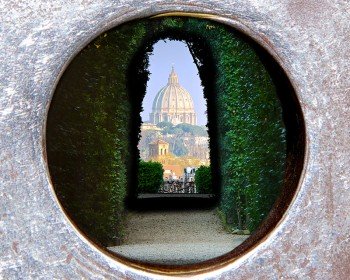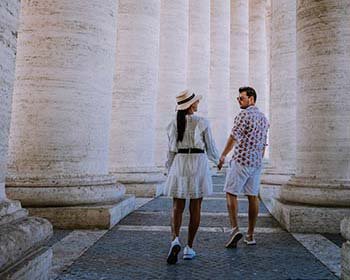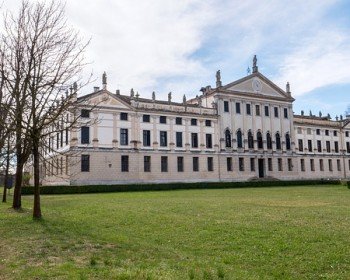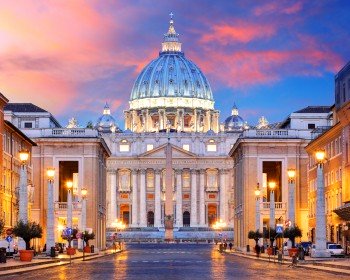At the Castelli Romani in the province of Rome, the Pontifical Villas of Castel Gandolfo are located in an area of about 55 hectares. Among them, together with Villa Barberini and Villa del Moro, stands out also Villa Cybo.
Book a visit to the Pope’s villa in Castel Gandolfo and live an unforgettable experience to discover the history of the Vatican and its works.
Castel Gandolfo and the Pontifical Villas
Castel Gandolfo is one of the most beautiful villages in Italy and is located in the Regional Park of the Castelli Romani. In this village for centuries the Popes have chosen to spend their holidays to relax and enjoy the atmosphere of the evocative breathtaking views.
The history of the Apostolic Palace of Castel Gandolfo
The current Apostolic Palace was built between 1623 and 1629 to a design by the architect Carlo Maderno. The palace is the result of the restoration and enlargement of the medieval castle of the Gandolfo and then of the baronial palace of the Savelli.
The first intervention took place on the initiative of Pope Urban VIII who was the first Pope to visit the residence of Castel Gandolfo (in the spring of 1626). The extraterritoriality of the Pontifical Villas was granted in 1871 to the Holy See by the law of the Guarentigies and was reconfirmed with the Lateran Pacts in 1929.
During the pontificate of Urban VIII was also planted the garden of the palace (Giardino del Moro), a garden of modest size with some avenues marked by hedges of mortella. The gardens of the Pontifical Villas have been realized with care and elegance and are really numerous: the Moro Garden, the Villa Cibo and Villa Barberini Gardens, the Magnolia Garden and the Belvedere Garden.
In 1870 (corresponding to the end of the Papal States) the papal residence of Castel Gandolfo experienced a long period of abandonment that ended only in 1929 following the Lateran Pacts between the Holy See and Italy.
With the Lateran Treaty, the Pontifical Villas assumed their current dimensions with the acquisition of Villa Barberini.
In 1934 the Astronomical Observatory entrusted to the Jesuits was transferred from the Vatican to the Palace of Castel Gandolfo.
Villa Barberini
Villa Barberini was founded by the nephew of Urban VIII, Taddeo Barberini. In 1653 the card. Carlo, son of Taddeo, entrusted the work of beautifying the villa to Bernini and G.B. Contini.
Villa Barberini is connected to Villa Cybo and the Papal Palace by a viaduct built in 1773. At this point, in 1770 Clement XIV fell from his horse and fractured his shoulder.
Villa Cybo
Villa Cybo was designed for itself by the architect Francesco Fontana. In 1717 it was purchased by Cardinal Camillo Cybo-Malaspina.
The Palace inside was furnished with furniture and valuable paintings and covered with rich wallpaper. The real treasure, however, was represented by the garden that was the object of great care by the cardinal.
The garden was enlarged with more than three hectares of land and created areas of parterre and thickets, inserted a menagerie for exotic animals and designed water features.
At the behest of Pius XII, the Audience Hall was built as part of the villa in 1957. John Paul II entrusted it to the Focolare Movement, which renamed it the "Mariapolis Centre". The Hall is usually used for congresses that attract many lay and consecrated people.






